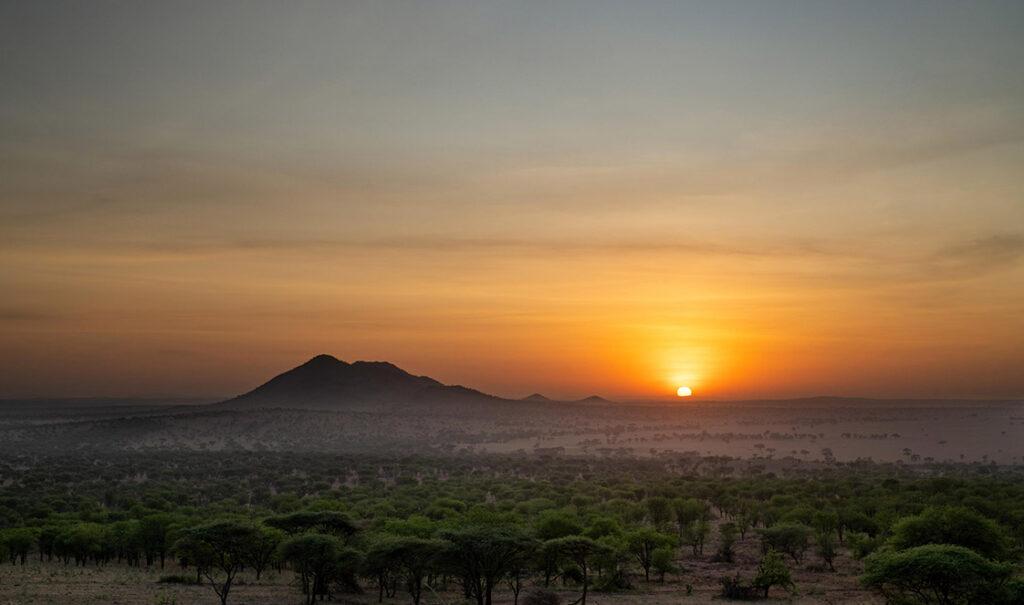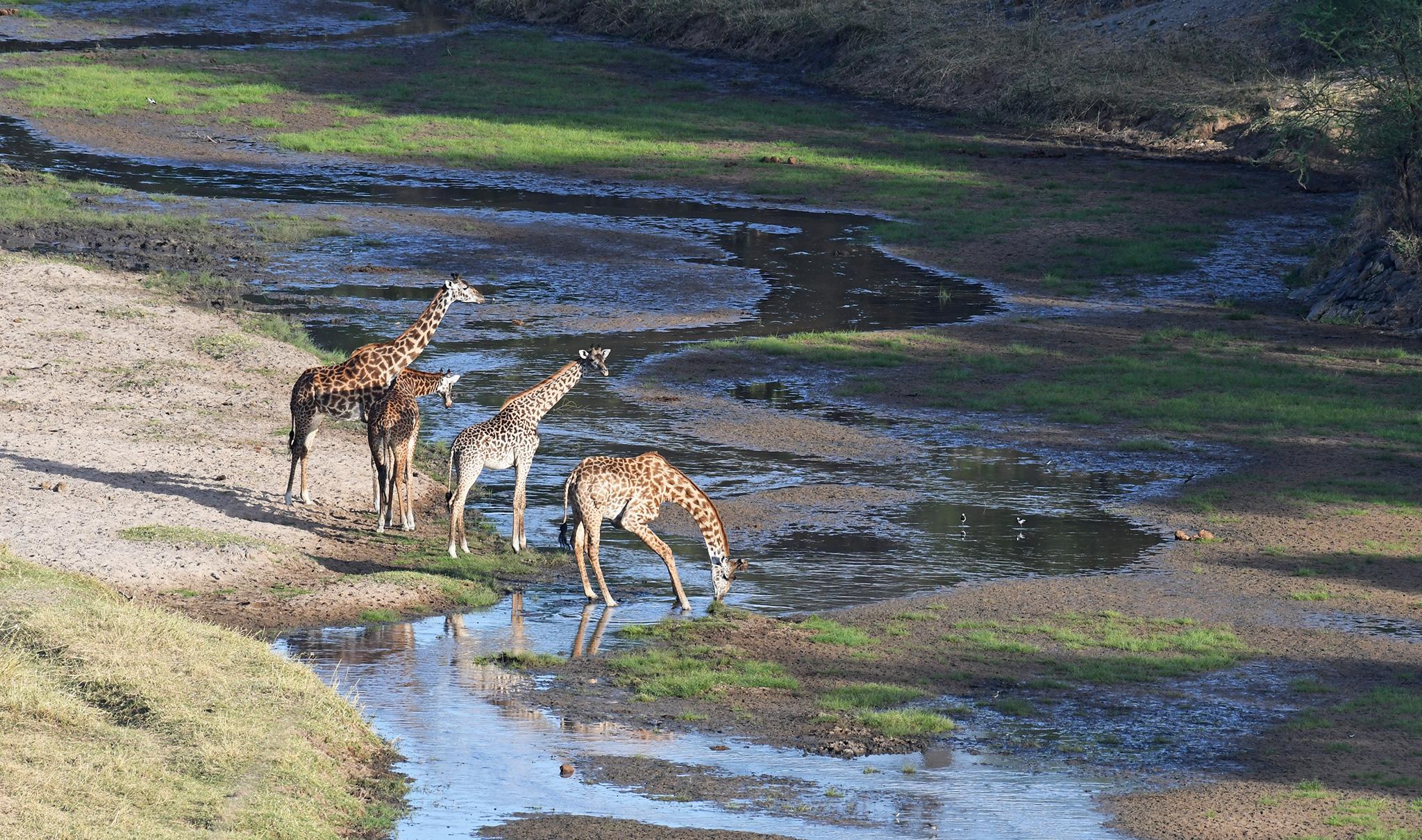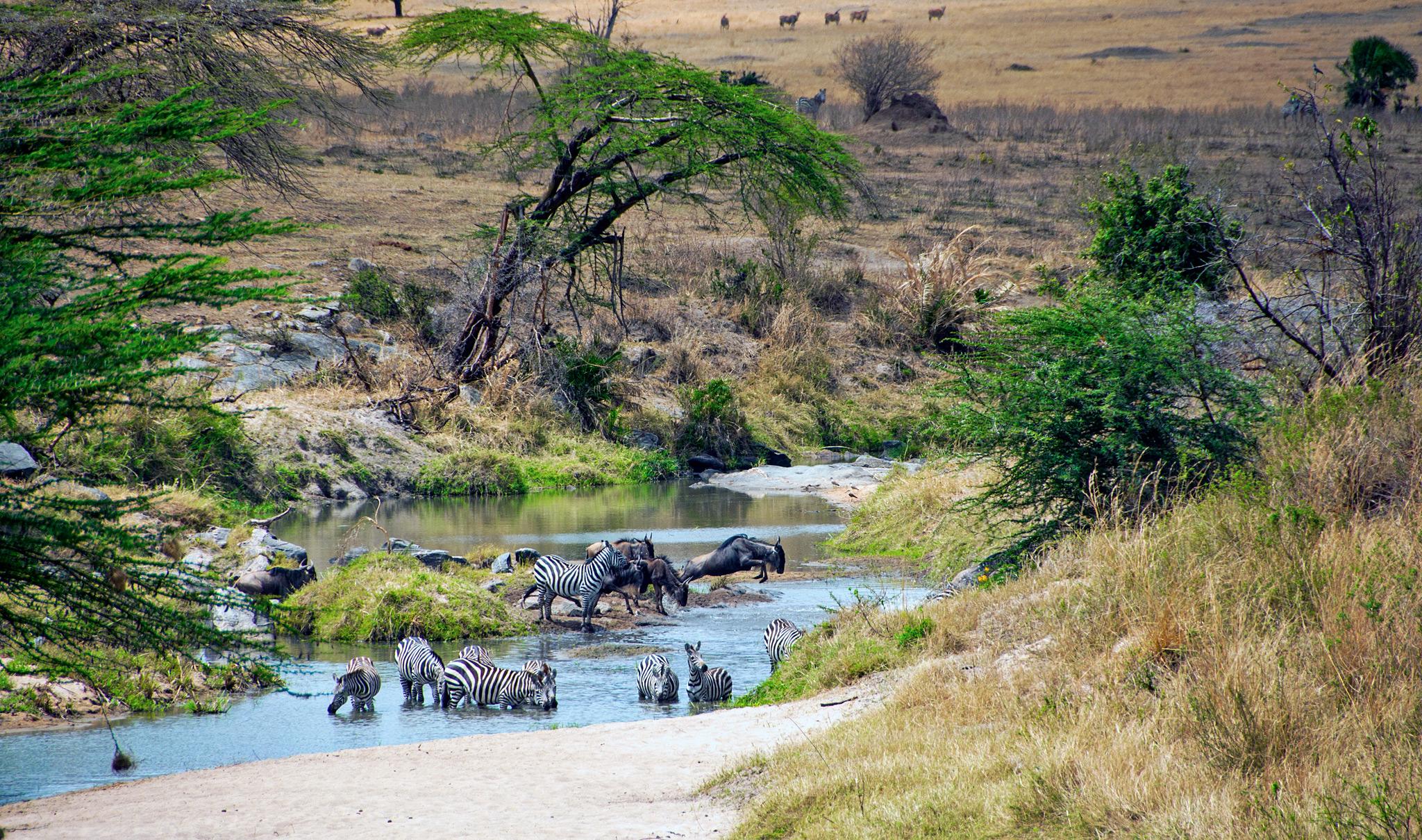Tarangire National Park is one of Tanzania’s most beautiful parks, and it can be visited throughout the year, but there is one time of the year that cannot be surpassed. The best time to visit Tarangire National Park is the dry season, from June to October. The weather is fantastic, with pleasant temperatures and minimal chance of rain. During this season, one of the largest concentrations of wildlife in East Africa is attracted to the Tarangire River, creating exceptional game-viewing conditions.

You can expect to see enormous herds of elephants, buffaloes, and gazelles, while the birdlife is outstanding, with over 550 recorded species. The high concentration of prey attracts large numbers of big cats, especially lions and leopards, providing onlookers a chance to see them hunting.
As you explore Tarangire, you will be surrounded by the stunning landscape, dominated by giant baobab trees that provide shade to one of Tanzania’s largest elephant populations. Tree-climbing lions are particularly fond of the massive Kigelia (sausage) trees, while troops of baboons seek refuge in the swaying palms during dusk. Dotted throughout the park are the sculptured shapes of terracotta-coloured termite mounds that resemble clay castles. It truly is a beautiful park.
When is the high season in the Tarangire National Park?
The peak season in Tarangire National Park is from June to October and from late December to February, during which high season prices apply at most accommodations.
The long dry season: June to October
The dry season is a great time to visit Tanzania because of the excellent weather. It’s perfect for trekking Mount Kilimanjaro, visiting the tropical beaches of Zanzibar and enjoying a safari. In Tarangire National Park, the vegetation is less dense, and the wildlife gathers near the Tarangire River, providing excellent conditions for wildlife sightings. Additionally, the park’s high population of elephants visits the river daily, making it a paradise for elephant lovers.
The short dry season: January to February
January and February typically experience warm weather with a slight chance of rainfall. Additionally, with fewer visitors, you can enjoy a more secluded experience.

When is the low season in the Tarangire National Park?
The long rains: end of March to May
The long rains in northern Tanzania last from end of March to May, coinciding with the low season. During this time, frequent thunderstorms occur, with March and April experiencing the highest rainfall. The lush vegetation makes it challenging to spot the wildlife as they tend to move away from the river. If your primary goal is to see as much wildlife as possible, avoid visiting during the long rains as it is probably not the best time to visit Tarangire National Park. However, if you love being in nature and don’t mind the rain, this can be an ideal time to visit as there are fewer visitors, lower prices, and last-minute availability.
The short rains: November to early December
After a long dry season, ending in October, the short rains provide much-needed relief to the wildlife and landscapes, transforming the park into numerous shades of green. Early morning game drives are still rewarding, as rainfall tends to occur in passing afternoon thunderstorms. From December, migratory wildlife moves out of the park.

How to plan a safari to Tarangire National Park
If you are planning a trip to Tarangire National Park but are unsure when to go, we have two suggestions that may help you. You can read our month-by-month weather and wildlife guide below. Alternatively, you can speak with one of our travel experts for a no-obligation consultation. In a short conversation, they can provide all the information you need to plan your trip to Tarangire National Park.
Two of our favourite safaris in Tarangire National Park:

Impressive Tanzania
Places Tarangire National Park, Serengeti National Park, Ngorongoro Crater
from 2,040 USD per person sharing

Tanzania in Style
Places Tarangire National Park, Karatu, Ngorongoro Crater, Serengeti National Park
from 3,860 USD (based on 7 persons)
The Tarangire National Park: a month-by-month guide:
January in the Tarangire: the short dry season & high season
January in Tarangire National Park receives fewer visitors, yet it is a beautiful time to visit. Daytime temperatures can reach as high as 28°C (82°F), and there is a chance of short-lived thunderstorms. The flora is in a state of brilliant green, and you can still expect to see a diverse range of animals and birds in the park, including nesting behaviour.
February in the Tarangire: the short dry season & high season
The weather and temperatures are similar to those in January. There are slightly more visitors than in January, and the wildlife viewing is still very good. If you also plan to visit the Serengeti National Park, the wildebeest calving season occurs in January and February. In a matter of weeks, 500,000 calves are born on the southern Serengeti plains. The sight and sound of this natural wonder is a truly memorable experience. We think February is amongst the best time to visit Tarangire National Park.

End of March, April and May in the Tarangire: the long rains & low season
The long rains last from end of March to May, with the heaviest rainfall in the last weeks of March and in April. During these months, the daytime temperatures gradually decrease from 28°C (82°F) in March to 25°C (77°F) in May.
Dense vegetation combined with the wildlife moving away from the dry-season water sources makes wildlife spotting challenging. Lower numbers of prey also create a less plentiful period for the resident big cats. However, the green landscape with stormy skies makes for ideal landscape photography, and in May, the wildebeest rut occurs in the Serengeti National Park, another spectacle worth seeing.
National Park fees and transport costs remain the same; however, as it is the low season, you may find lower rates for camps and lodges during this period. The long rains are generally not considered as the best time to visit Tarangire National Park. But if you’re a repeat visitor, it can be a magical experience.

Best time to visit Tarangire National Park: June: the dry season & high season
June marks the beginning of the dry season and is a great time to visit. The temperatures are mild, reaching up to 24°C (75°F), and there is little chance of rainfall. Early morning game drives can be cold, so it’s worth packing multiple warm layers that can be removed as temperatures warm up. The landscapes are still green, the wildlife sightings are excellent, and it is the start of Tanzania’s peak season.
July in the Tarangire: the dry season & high season
July is an exciting time to visit Tarangire. As the landscapes dry out, the wildlife that left the park in December return to create exceptional wildlife spotting conditions. Game drives are enjoyable thanks to dry weather and mild daytime temperatures of 24°C (75°F). Additionally and to plan your safari further, the wildebeest migration in the Serengeti National Park reaches the Mara River, and the world-renowned river crossings begin.
August in the Tarangire: the dry season & high season
By August, the park is full of the returning migratory herds, especially elephants. Their tracks crisscross the landscape, coming and going from the river. Additionally, a mini wildebeest migration takes place in the park. The abundance of prey creates a prime time for predators to hunt the weak and old from the large herds. The chances of rainfall during this time are minimal, and the daily high temperatures remain around 25°C (77°F). It is peak season for safari travel in Tanzania and also considered the best time to visit Tarangire National Park. Therefore, you should expect more visitors in the park and at sightings. Make sure to book early!

September in the Tarangire: the dry season & high season
During September, temperatures reach 27°C (80°F). There is the opportunity to see unique species like the long-necked Gerenuk and the majestically patterned Oryx. Additionally, numerous birds flock to the swamps and rivers as the water sources outside the park begin to dry out. By day, the mottled-brown female ostrich incubates their eggs, while the black male ostrich takes over the nighttime shift; their functional colouring is an excellent example of the intelligence of nature. September is one of the busiest travel months in Tanzania and one of the best months to visit Tarangire National Park.
Best time to visit Tarangire National Park: October: the dry season & high season
October is the last month of the dry season and the high season in Tanzania. It is a challenging period for the wildlife in Tarangire National Park, but it is a fantastic time to visit. No precipitation for five months shrinks the river into a shallow stream, and little food is available. Dust devils sweep across the dry landscapes, while elephant herds of up to 300 individuals can be seen filing through the park. It is a time of plenty for the big cats, and wildlife viewing is exceptional. Temperatures climb to 28°C (82°F), and far-off thunderstorms can be seen towards the end of October.

November in the Tarangire: the short rains & shoulder season
Despite being considered a rainy season month, November can be a beautiful time to explore the park and see the wildlife. The arid land waits patiently for the dry season to break. Meanwhile, the vast African sky is filled with moody storm clouds, with rays of light bursting through patches of clear sky. Temperatures climb to 29°C (84°F), and afternoon thunderstorms occur. The trickling river turns from a stream into a flash flood that clears the bank of debris. As the days pass, the waterways fill, and lush grasses emerge, creating a sense of a new beginning.

December in the Tarangire: the short rains & high season
Despite the thunderstorms, temperatures remain high, climbing up to 29°C (84°F) during the afternoons. Fortunately, the afternoon storms don’t interrupt morning game drives, which is the ideal time for spotting wildlife. The large herds move further afield thanks to the availability of water and vegetation. However, it is still possible to experience good wildlife viewing, and the arrival of migratory birds makes birdwatching even better. The clear sky, abundant waterways, and unique flora create exceptional landscape photography conditions.
The best time to visit Tarangire National Park also depends on which other parks and regions you want to visit. Get in touch with our travel experts to create your personalised Tanzania safari.
 on Tripadvisor
on Tripadvisor




